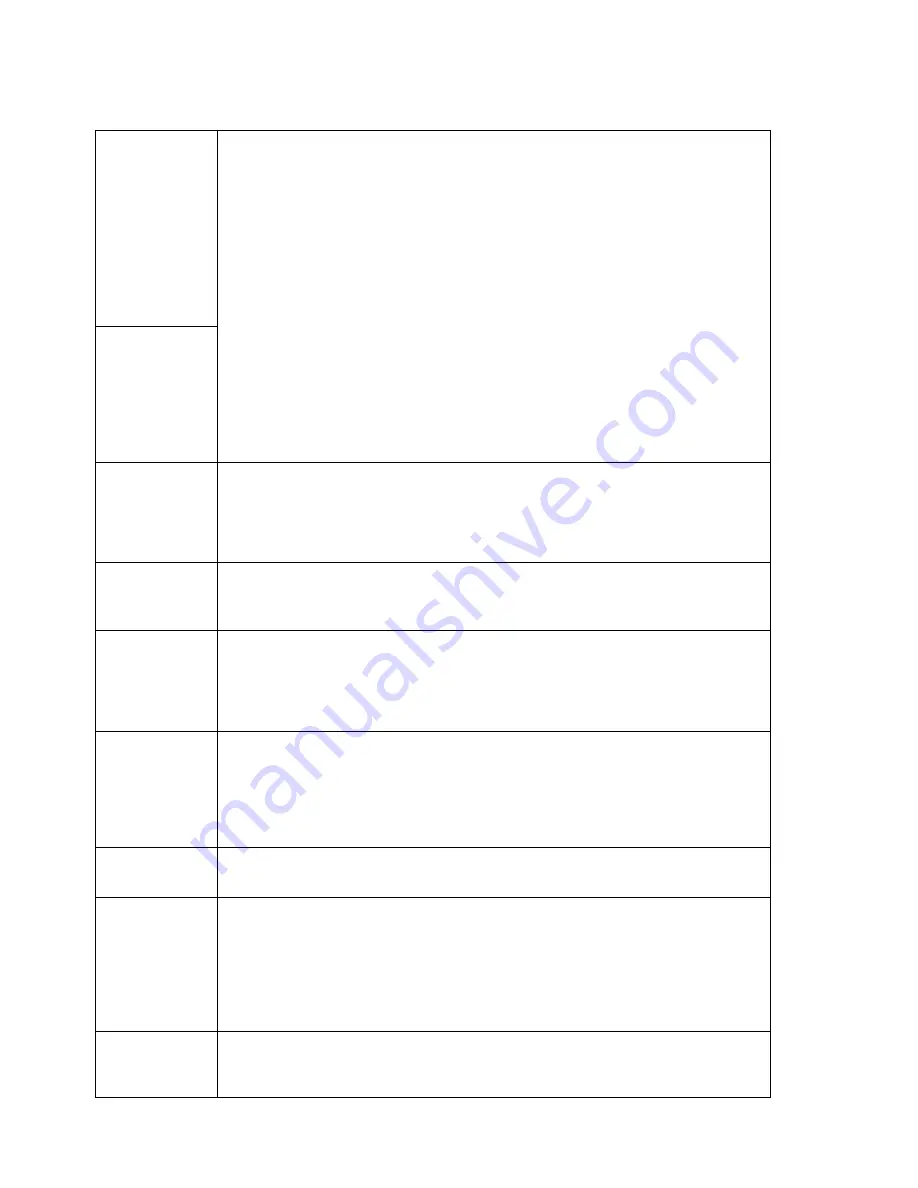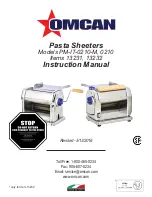
IM009
7
SC-401
•
ATTENTION: make sure the kneading paddle is not in the loaf. If this happened, remove it carefully from the
bread. Never use metal objects, they can scratch the surface of the pan!
TROUBLESHOOTING GUIDE
Before calling the service centre, please, familiarize with the below table.
The bread does
not rise
The top of the
bread is rugged
The quality of gluten in your flour is inadequate if you use flour other than bread flour.
(The quality of gluten can differ depending on the temperature, humidity, flour
storage conditions and the time of harvesting)
•
Try another type of flour, another manufacturer or another flour batch.
The dough has become too hard, because you added too little liquid.
•
Bread flour with high protein content absorbs more water than other types, so try
to add another 10-20 ml water.
You use inadequate yeast.
•
Use dry yeast from packages with an inscription “quick-acting yeast”. This type
does not need pre-fermentation
You have put too little yeast or your yeast is stale.
•
Use the measuring spoon from the set. Check the expiry date of the yeast. (Store
it in the refrigerator).
Liquid was in contact with the yeast before kneading.
•
Check that you have put the ingredients according to the order as given in the
instruction manual.
You have put too much salt or not enough sugar.
•
Check the recipe and measure the correct amount with the standard measuring
spoon, which comes with the appliance.
•
Check that salt or sugar are not present in other ingredients.
The bread has a
too light texture
You have used too much yeast.
•
Check the recipe and measure the correct amount with the standard measuring
spoon, which comes with the appliance.
You have added too much liquid.
•
Some types of flour absorb more water than others; try to reduce the amount of
water by 10-20 ml.
The bread fell
after rising
The quality of your flour is unsatisfactory.
•
Try flour of another manufacturer.
You have used too much liquid.
•
Try to reduce the amount of water by 10-20 ml.
The bread rose
too high
You have used too much yeast/water.
•
Check the recipe and measure the correct amount with the standard measuring
spoon (yeast) / cup (water), which come with the appliance.
•
Check that no excessive water comes from other ingredients.
You have not enough flour.
•
Weigh flour accurately with the weigh-scale.
The bread is
pale and sticky
You use too little yeast or your yeast is stale.
•
Use the measuring spoon from the set. Check the expiry date of the yeast. (Store
it in the refrigerator).
There was a power outage or the bread maker was stopped during the baking cycle.
•
The bread making machine stops if it was stopped for more than 10 minutes. You
have to remove the bread from the pan and start the cycle again with the new
ingredients.
There is flour left
on the bread.
You have used too much flour, or you have too little liquid.
•
Check the recipe and measure the correct amount of flour with the weigh-scale
or liquid with the measuring cup for liquids, which comes with the set.
The bread is not
well kneaded
You have not inserted a kneading paddle into the bread pan.
•
Before you load the ingredients make sure the kneading paddle is in the pan.
•
There was a power outage or the bread maker was stopped during the baking
cycle.
•
The bread making machine switches off if it was stopped for more than 10
minutes.
•
Presumably you would have to start bread baking again but this could lead to
adverse results if the kneading has already started.
After the start of
the programme
HHH appeared
on the display
This means that the temperature inside the oven is too low. It is necessary to move
the appliance to a warmer room.








































